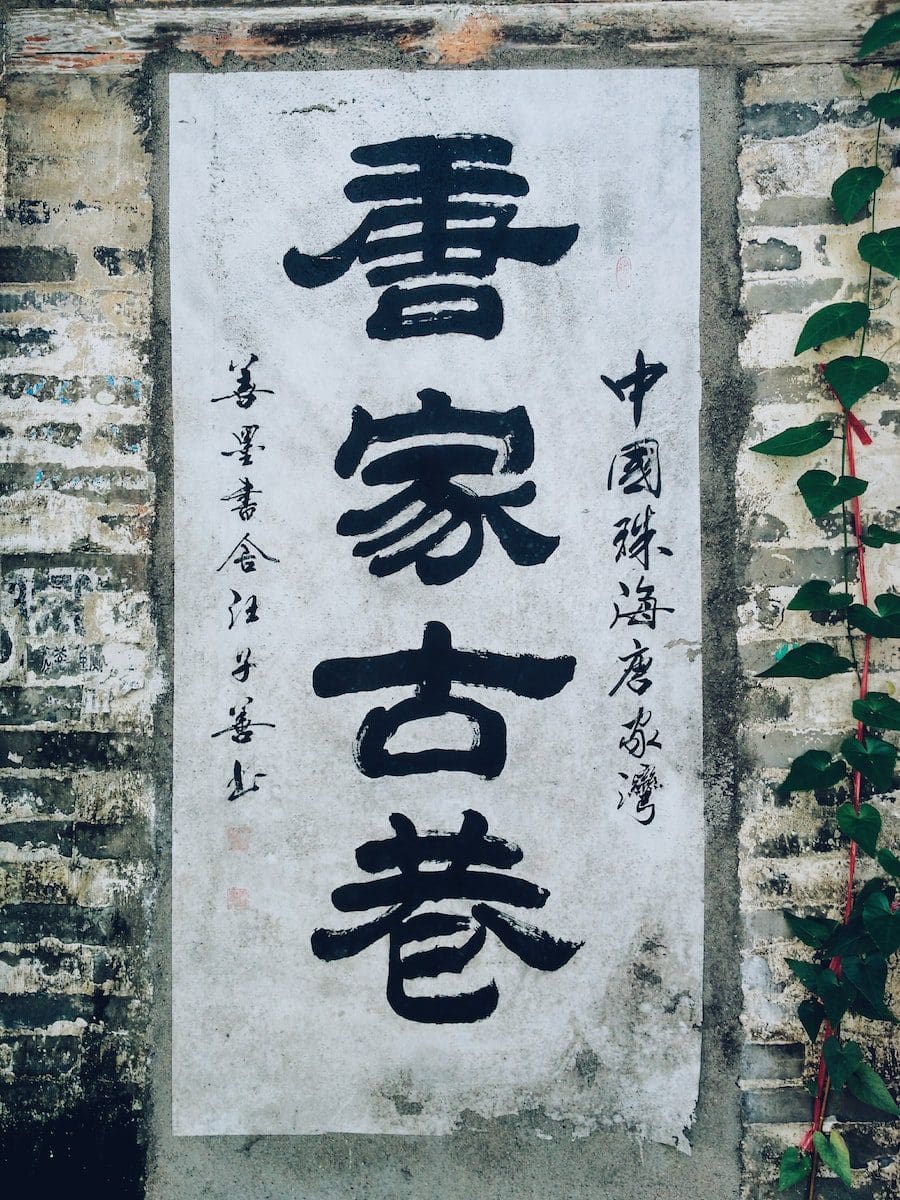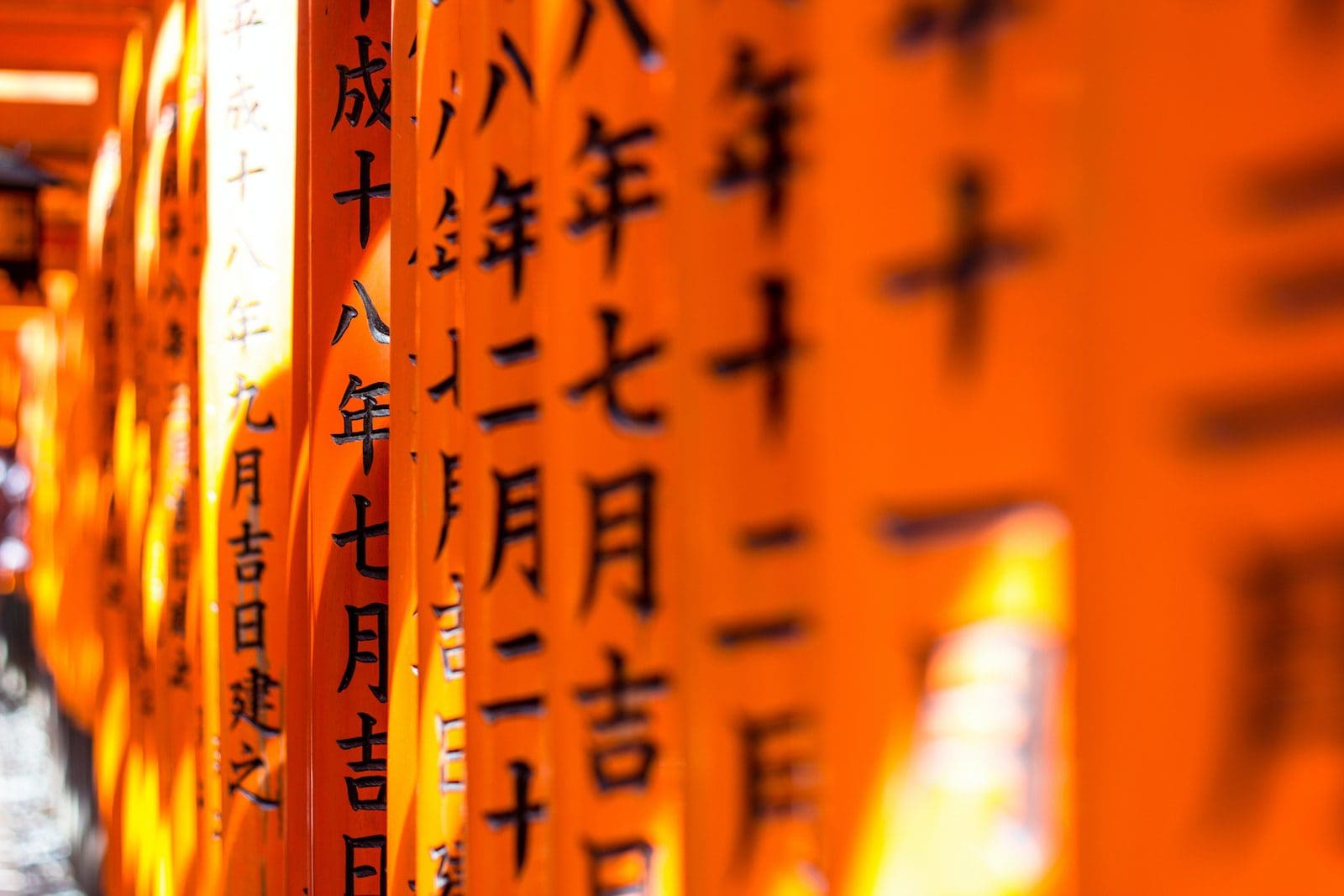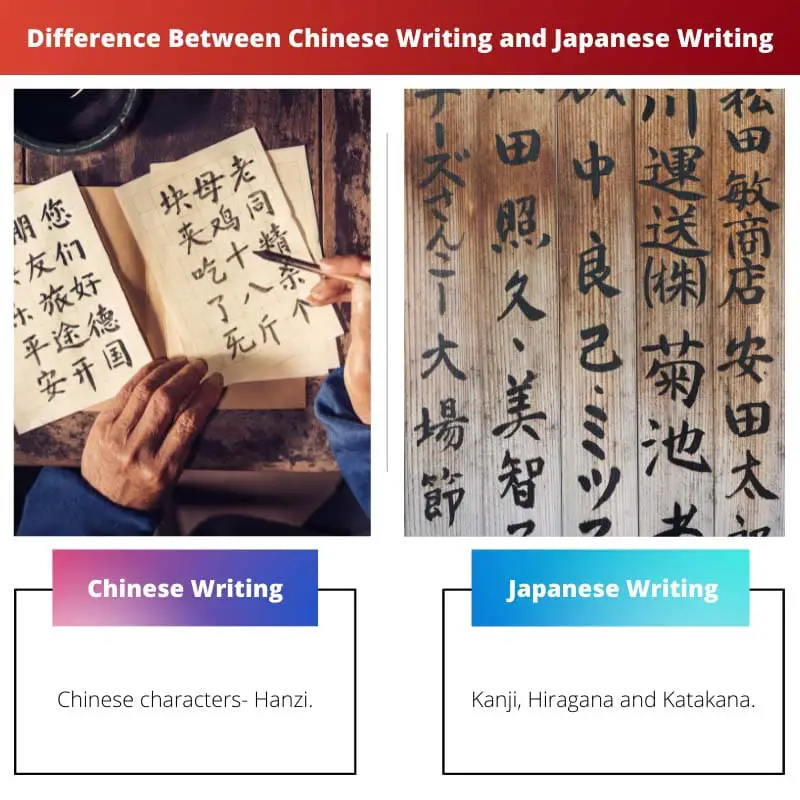Learning another language is learning different words for the same things and another way to think about things. This is a quote by a famous American journalist Flora Lewis.
Learning new things is necessary in today’s world since it changes and upgrades so fast. Chinese Writing and Japanese Writing are one of the most complicated writing systems to be studied, but as Flora said, it’s about learning about things.
An individual might struggle to differentiate between these pieces of writing as not only the way of how they are inscribed looks the same, but once a person gets ahold of any of the two, they will see the difference clearly.
Not only the meaning of the words are different, but the grammar, vowels, and other means of writing that complete the writing is also different as well.
Key Takeaways
- Chinese writing uses characters representing ideas, while Japanese paper uses characters and syllabic scripts.
- Japanese writing has two syllabic scripts, hiragana and katakana, representing phonetic sounds.
- Chinese characters are more complex than Japanese characters and require more writing strokes.
Chinese Writing vs Japanese Writing
Chinese writing is based on logographic characters, with each character representing a single word or concept using traditional characters. Japanese writing uses a combination of logographic characters (kanji), phonetic syllabaries (hiragana and katakana), and Roman letters (romaji).

Chinese Writing is a logosyllabic writing system. The writing uses Chinese Characters, known as Hanzi, to inscribe.
It is one of the oldest writing languages, the first examples being dated to 1192 BC. During the 20th century, Chinese Writing was divided into two forms: Traditional Chinese and Simplified Chinese.
Japanese Writing comprises mostly three different types of scripts: Kanji, Hiragana, and Katakana. The language is one of the most complicated writing today since it uses not one but three scripts, and in that Kanji, script consists of a large number of characters.
Both Hiragana and Katakana have 46 characters each.
Comparison Table
| Parameters of Comparison | Chinese Writing | Japanese Writing |
|---|---|---|
| Systems | Chinese characters- Hanzi | Kanji, Hiragana and Katakana |
| Language family | Sino-Tibetan | Japonic or the Japanese-Ryukyuan |
| Consonants | Twenty-five | Eighteen |
| Vowels | Ten vowels | Five vowels |
| Way of writing | It starts from the right side then go to the left side. | It starts from the right side then go downward. |
What is Chinese Writing?
Chinese Writing is one of the earliest forms of writing. It is one of the earliest languages to be founded that is used to date, though now new modifications have been added.
The letters of the language are based on images. The writing entirely consists of Hanzi, which has come up from images.
As stated earlier, Chinese Writing is divided into two forms: Traditional Chinese, which is still used in an active form as a language in countries like Hong Kong, Macau, and Taiwan. The other form, Simplified Chinese Writing, is used in countries like Malaysia, Singapore, and mainland China.
Now, the new modern way of Chinese Writing is used, which is called Mandarin.
There are other types of Chinese as well, like Cantonese and Hokkien, and though they are not that popular, they can be and are still used. The set of Chinese characters consists of thousands of words, and even though it is a group of characters, it only has five vowels.

What is Japanese Writing?
Japanese Writing is a system of writing that uses Kanji, Hiragana, and Kana. All these forms are logograms, meaning signs that represent characters.
Hiragana is a set of syllabary characters. Katakana is an angular script that has been derived from the Kana writing system.
The main writing system has been inspired by Chinese Writing.
Japanese Writing may look the same as Chinese, but the words are pronounced differently. Between the three systems that the language uses to write, Hiranaga is supposed to be the easiest of the three.
And the set Katakana is used for new and foreign words.
Kanji is the set of characters that Japanese Writing has borrowed from Chinese Writing. The way of writing Japanese characters in writing is to start from the right side of the page and then go down.
The letters are wider and have space between them in comparison to Chinese Writing.

Main Differences Between Chinese Writing and Japanese Writing
- Chinese Writing has ten vowels in its language, while Japanese Writing has only five in comparison.
- Hiragana is the set of syllabary characters that are used in Japanese Writing. One can identify the piece of writing if one finds hiragana in it since they are wider than in comparison to Chinese Writing.
- Words in Chinese Writing can end on any letter of the language, like English. And on the comparison, Words in Japanese Writing can only end with the letter ‘n’ or any vowel.
- Japanese Writing has more number of systems within the language that it uses. Three to be precise: Hiragana, Katakana & Kanji. While Chinese Writing has only one system of language that it follows, and that is Chinese characters itself.
- The words in Chinese Writing are short, while Japanese Writing is multisyllabic. These are those types of words that have more than have three syllables in a single word.


This article provides a fascinating explanation of the differences between Chinese and Japanese writing systems. Understanding the distinctions between these two complex languages is essential for effective communication in both societies.
I find the comparison table very helpful, as it illustrates the differences between Chinese and Japanese characters in a clear and concise manner.
I completely agree, understanding the intricacies of each writing system is crucial for anyone studying these languages.
As a student of linguistics, I find the in-depth comparison of Chinese and Japanese writing systems in this article to be enriching and insightful. It offers an invaluable perspective for language scholars.
The exploration of the differences in the way Chinese and Japanese characters are written and pronounced is deeply enlightening. This article provides profound insights into the complexities of these distinct writing systems.
The comparison of the historical origins and distinctions between Chinese and Japanese writing is exceptionally well articulated in this article. It provides a comprehensive understanding of the diverse linguistic traditions.
The article’s discussion of the intricacies of Chinese and Japanese phonetic sounds is particularly illuminating. It deepens the understanding of these intricate languages.
The comprehensive analysis of the differences in Chinese and Japanese writing in this article is intellectually stimulating. It offers invaluable insights into the intricate nature of these ancient languages.
I appreciate the detailed comparison between the Chinese and Japanese writing systems presented in this article. It enhances the understanding of the intricate character systems embedded in these languages.
The article’s detailed exploration of the distinctions between the written and pronounced words of Chinese and Japanese languages is truly enlightening. It broadens our understanding of these complex linguistic traditions.
The detailed examination of the complexities of Chinese and Japanese writing in this article is truly enlightening. It deepens the appreciation for the linguistic intricacies of these ancient languages.
The article provides a profound understanding of the unique writing systems of Chinese and Japanese languages, and it is a valuable resource for linguistic scholars and language enthusiasts.
I concur with the comprehensive analysis of Chinese and Japanese writing in this article. It underscores the depth and richness of these linguistic traditions.
This article delivers a comprehensive comparison of the Chinese and Japanese writing systems, emphasizing the intricate details of their distinct features. It is a valuable resource for scholars of Asian languages.
The clear distinction between Chinese and Japanese writing systems highlighted in this article is extremely informative. It is essential for anyone interested in these languages to comprehend the unique characteristics of each writing system.
I appreciate the in-depth analysis of the fundamental differences between Chinese and Japanese writing. This article is a valuable resource for linguists and language enthusiasts.
The article provides a comprehensive overview of the distinctive features of Chinese and Japanese writing systems. It offers an insightful comparison that enhances understanding of the complexities of these languages.
I appreciate the detailed information about the origins and evolution of Chinese and Japanese writing. This article broadens the perspective on the cultural and linguistic significance of these ancient writing systems.
It’s fascinating to learn about the origins and complexities of Chinese and Japanese writing. The influence of Chinese characters on Japanese writing is particularly noteworthy, and this article provides valuable insights into these linguistic systems.
The detailed exploration of the different types of scripts in Japanese writing is both informative and enlightening. This article provides a comprehensive understanding of the complexities of Japanese characters.
I’m intrigued by the historical and cultural implications of the relationship between Chinese and Japanese writing systems. This article sheds light on this intricate interconnection.
The historical evolution of Chinese and Japanese writing systems presented in this article is thought-provoking. It underscores the complexity and richness of these ancient languages.
The distinction between Traditional Chinese and Simplified Chinese writing is an intriguing aspect discussed in this article. It provides valuable insights into the cultural diversity of Chinese characters.
The practical comparison of Chinese and Japanese writing in terms of language family and consonants is particularly enlightening. This article offers a comprehensive exploration of these linguistic traditions.